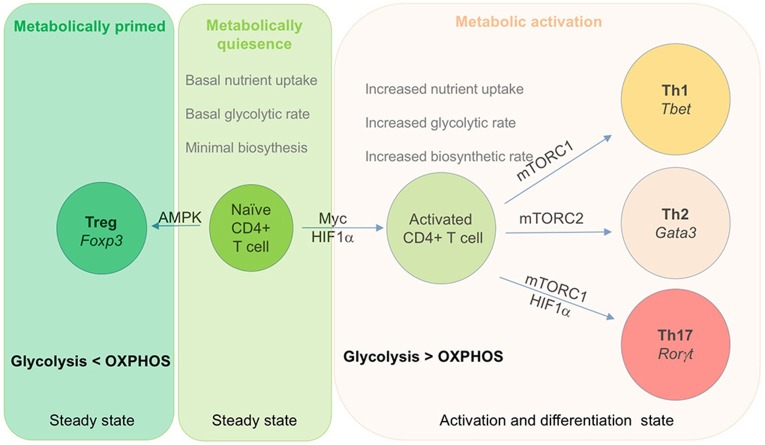Figure 2.
Role of metabolic checkpoints transcription factor in T cells activation and differentiation. Metabolism play a key role in activation and differentiation of effector subset of T cells. This diagram depict key transcription factor that regulate the differentiation of effector cells. Naïve T cells are metabolically quiescent and rely on OXPHOS for their energy requirement. Upon activation, T cells shift their metabolic requirements and utilizes glycolysis over OXPHOS to meet their growing energy and biosynthetic demands. Both Myc and HIF-1α play a crucial role in activation of T cells upon antigen encounter. During this process, activated T cells express Glut 1, a glucose transporter that enhance glucose uptake in order to maintain the biosynthetic demand of dividing cells. Activated T cells differentiate into Th1 and Th2 cells by respectively expressing T-bet and Gata3 as their unique master transcription factor. In addition, Th1 and Th2 cells also express mTORC1 and mTORC2 as metabolic transcription factor respectively. Similarly, Th17 cells express RORγt as its lineage specific transcription factor along with HIF-1α and mTORC1.

